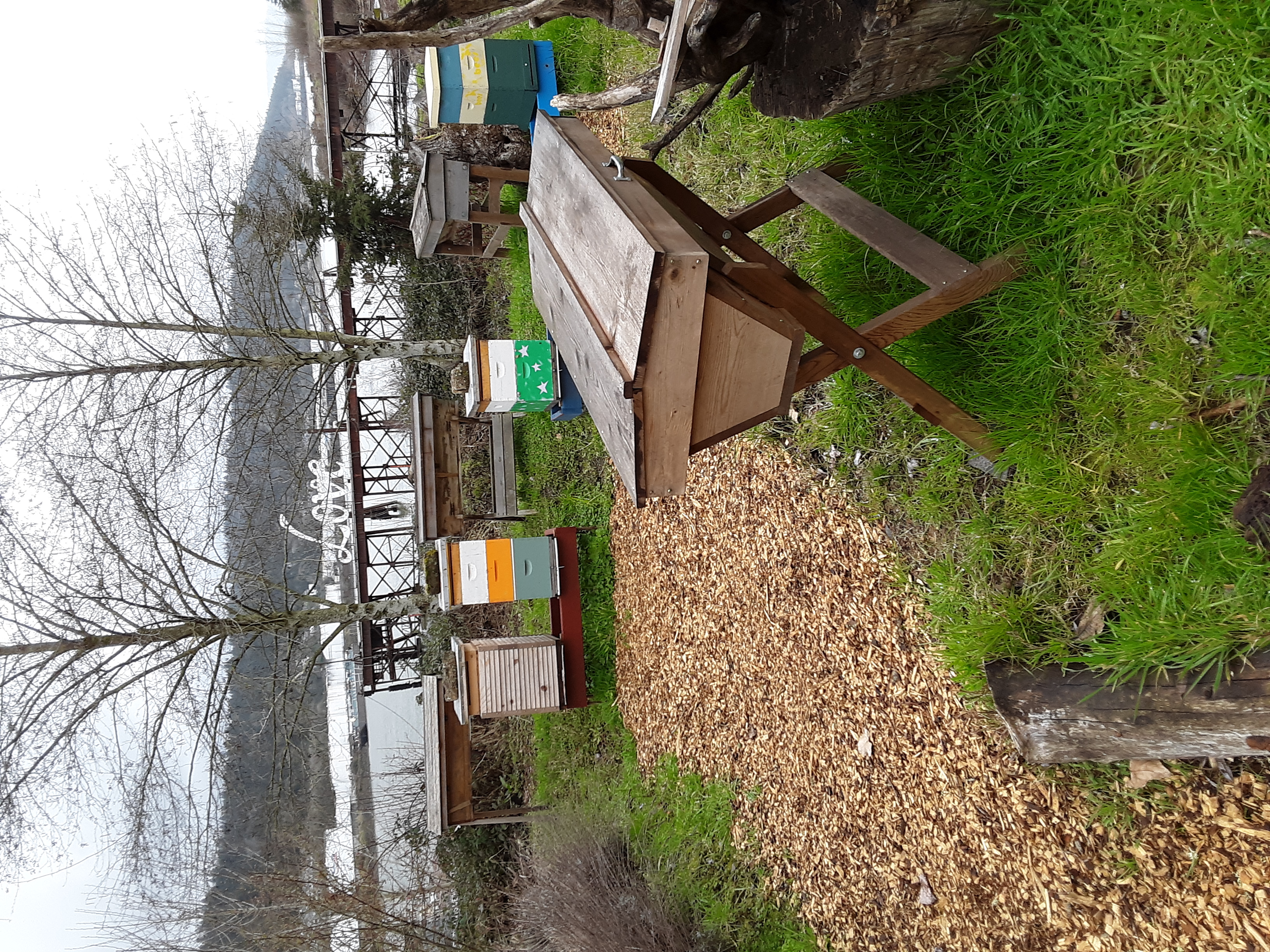Smashed individual hives; some frames carried away from apiaryapiary:
a place where beehives and beekeeping equipment are located; also called a bee yard. An out-apiary is a site away from the owner’s residence. . Look for paw prints and widespread scattering and battering of equipment. Sometimes you may see bear scat in the vicinity.
. Look for paw prints and widespread scattering and battering of equipment. Sometimes you may see bear scat in the vicinity.
Bears are an occasional threat to apiariesapiary:
a place where beehives and beekeeping equipment are located; also called a bee yard. An out-apiary is a site away from the owner’s residence. , smashing individual hives to eat brood and honey. Bears often make repeat visits to an apiaryapiary:
, smashing individual hives to eat brood and honey. Bears often make repeat visits to an apiaryapiary:
a place where beehives and beekeeping equipment are located; also called a bee yard. An out-apiary is a site away from the owner’s residence. , usually at night and primarily in spring or fall, until all hives are destroyed. Bears scratch at secured hives, tip hives, smash covers or bottoms to reach inside, and even pick boxes up. They will remove frames when hive parts are scattered and move away from the apiaryapiary:
, usually at night and primarily in spring or fall, until all hives are destroyed. Bears scratch at secured hives, tip hives, smash covers or bottoms to reach inside, and even pick boxes up. They will remove frames when hive parts are scattered and move away from the apiaryapiary:
a place where beehives and beekeeping equipment are located; also called a bee yard. An out-apiary is a site away from the owner’s residence. to feed. Bears prefer bee brood but will also consume honey.
to feed. Bears prefer bee brood but will also consume honey.
Three different bear species in Asia will seek out feral and managed beehives, but the brown bear of Europe and the black bear of North America are the most frequent beehive pests. Damage varies widely—apiary attacks were reported in 39 of 62 states and provinces in a survey. Attacks are becoming more commonplace as wild game programs seek to recover and restore bear populations.
Some states and provinces compensate beekeepers who build protective electric fences around their hives. To be effective deterrents, fences must be built prior to any instances of bear damage. A few states allow other measures, such as shooting. State game officials may cooperate in trapping and relocating problem bears to more remote regions. Efforts to elevate colonies on stands or chain hives to trees have had limited success. Often, the most effective measure in the long run is to simply move the apiaryapiary:
a place where beehives and beekeeping equipment are located; also called a bee yard. An out-apiary is a site away from the owner’s residence. site.
site.
Human vandalism; hives toppled due to soft earth or storm damage, though it's not that if you see evidence of bear prints and extensive comb damage.
Ellis JD and Sanford MT. 2019. Florida bear and beekeeping. University of Florida/IFAS Extension. Accessed 2023. https://edis.ifas.ufl.edu/publication/AA133
Taylor JD and Phillips JP. 2020. Black Bear. Wildlife Damage Management Technical Series, USDA, APHIS: 1-30. https://www.aphis.usda.gov/wildlife_damage/reports/Wildlife%20Damage%20Management%20Technical%20Series/black-bear-wdm-tech-series.pdf
Burlew R. 2022. Why did the bear cross the road? Black bears in the bee yard. American Bee Journal 162(2): 159-163. https://bluetoad.com/publication/?i=733879&p=47&view=issueViewer and https://bluetoad.com/publication/?m=5417&i=733879&view=articleBrowser&article_id=4189443&ver=html5
Contact state or provincial wildlife officials where you live.